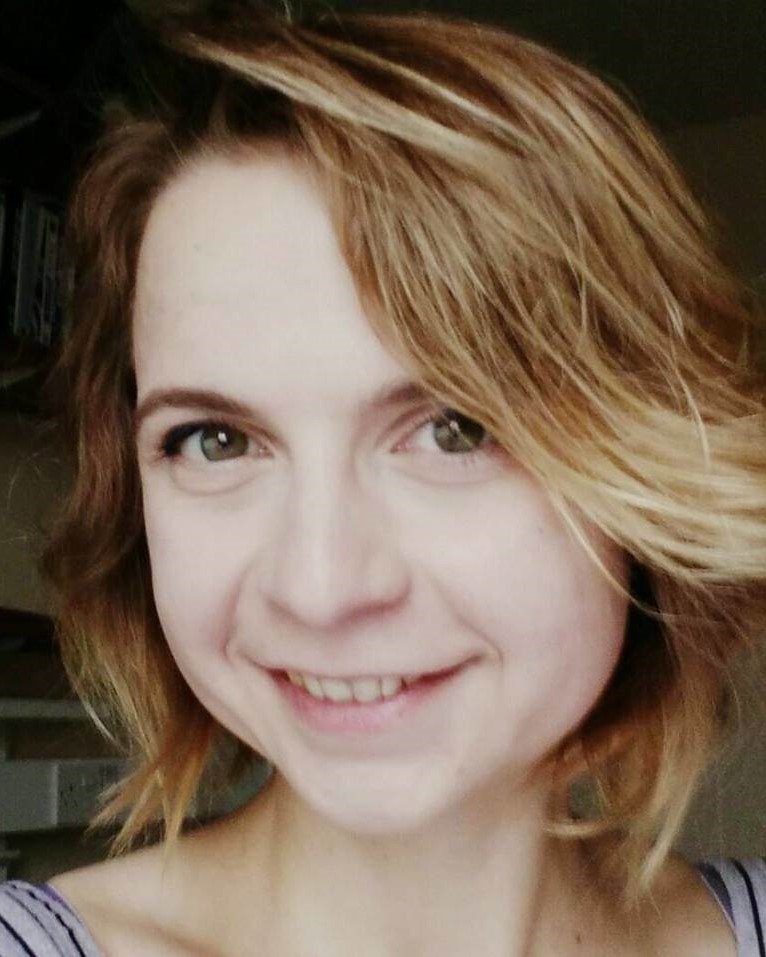
Marina Filip
“For pioneering contributions to the understanding of light-matter interactions in hybrid organic-inorganic metal-halide semiconductors”
Prof. Marina Filip has been an Associate Professor of Condensed Matter Physics in the Department of Physics at the University of Oxford since February 2020, where she is leading the Computational Condensed Matter Physics group. She is also a Tutorial Fellow in Physics at University College, Oxford. Before joining the Physics Faculty at Oxford, Marina was a post-doctoral researcher at the Lawrence Berkeley National Laboratory and UC Berkeley in the USA (2018-2020) and in the Materials Department at the University of Oxford (2015-2018), where she was also a Junior Research Fellow at Wolfson College, Oxford. Marina completed her PhD in Materials Science from the University of Oxford (UK, 2015), and her Bachelors in Physics at the University of Bucharest (Romania, 2011).
Marina’s research group specializes in computational modelling techniques based on density functional theory and many body perturbation theory. Her research focuses on the development new computational methods and frameworks that aim to improve the accuracy and extend the predictive power of state-of-the-art computational modelling techniques and on using these techniques to understand the photophysical properties of complex semiconductors and insulators and to design novel materials. Marina’s research draws inspiration from fundamental and applied research by pursuing interweaving and interdisciplinary research directions at the intersection between Condensed Matter Physics, Materials Science and Chemistry, and by engaging in collaborative research with experimentalist colleagues.
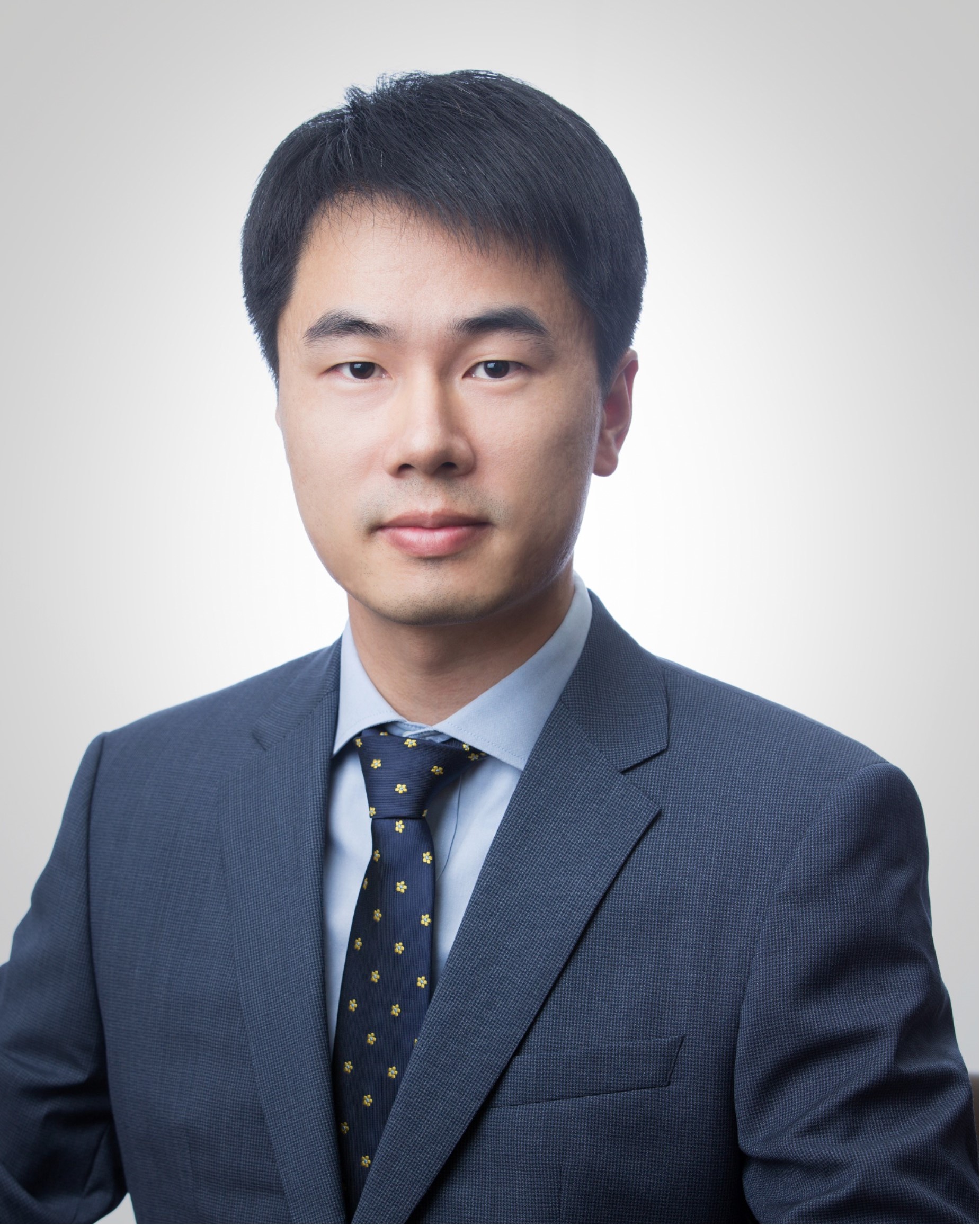
Yang Xu
“For pioneering experimental studies of low-dimensional quantum materials including the semiconducting and magnetic moiré materials and topological insulators”
Yang Xu is an Associate Professor and group leader at the Institute of Physics (IOP), Chinese Academy of Sciences. His research interests center on studying strong correlation and topological physics in low-dimensional quantum materials. Yang earned his B.S. from the School of the Gifted Young at the University of Science and Technology of China in 2011. His Ph.D. was completed in 2018 at Purdue University, where he primarily studied electronic transport in three-dimensional topological insulators and demonstrated the first gate-tunable “half-integer” quantum Hall effect arising from the topological surface states. From 2018 to 2020, he was a postdoctoral researcher at Cornell University working on optical spectroscopy of various 2D van der Waals (vdWs) heterostructures. He has been appointed at IOP since Dec. 2020. Over the last few years, Yang has made outstanding contributions to the study of emergent quantum states in 2D moiré superlattices. For example, Yang has pioneered the “Rydberg exciton sensing” technique, which leverages the excitonic excited states (i.e., Rydberg excitons) in a monolayer semiconductor as local dielectric sensors to probe the novel electronic states in nearby graphene or 2D semiconductor moiré superlattices. He has also conducted the first experiment to shed light on the physical properties of moiré magnets. Most recently, he is involved in the development of low-temperature and high-pressure study of high-quality vdWs heterostructures with in-situ electrical and optical access inside diamond anvil cells.
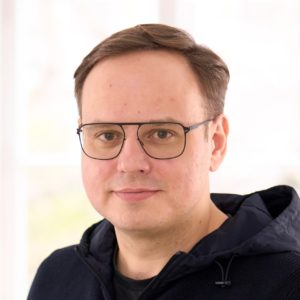
Dmitri K. Efetov
“For the observation of novel insulating, superconducting and topological many-body ground states in magic angle twisted bilayer graphene”.
Short Biography
Prof. Dr. Dmitri K. Efetov (M) received a Diploma (M.Sc.) in Physics from ETH Zurich (CH) in 2007. Subsequently Dmitri earned a M.A., M. Ph. and Ph.D. in Physics from Columbia University (USA) in 2014, under the supervision of one of the pioneers of graphene Prof. Dr. Philip Kim, with a thesis titled “Towards inducing superconductivity into graphene”. Dmitri then worked as a Postdoctoral Researcher at the Massachusetts Institute of Technology (MIT, USA) in the group of Prof. Dr. Dirk Englund, developing ultra-fast microwave thermometry and single photon detectors based on graphene. Since 2017 Dmitri was an Assistant Professor and Group Leader at ICFO (SP), and since 2021 is a Full Professor (W3) and Chair of Solid State Physics at LMU Munich (GER), with a research program that concentrates on the investigation of novel “moiré materials” at the intersection of condensed matter physics, optics and quantum science.
Dmitri K. Efetov has been at the forefront of the key development in the field of moire materials, and in particular of magic angle twisted bilayer graphene. He has developed ultra-clean fabrication protocols for magic angle twisted bilayer graphene, which are recognized to produce devices with the most homogeneous and precise twist-angles. Low temperature transport studies of these led to the discovery of a multitude of novel superconducting and correlated insulator phases, the demonstration of tuned electronic correlations via dielectric engineering, and the observation of unconventional sequence of topologically non-trivial Chern insulators and orbital magnets. Overall, Efetov’s work has shed new light on the many-body phase diagram of twisted bilayer graphene, and has strongly contributed to the ongoing understanding of this system, which can now surely be positioned next to strongly correlated systems, such as cuprates, pnictides and heavy fermion compounds.
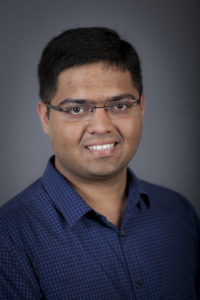
Deep Jariwala
“For pioneering studies on exciton-polaritons and electronic heterostructures of two-dimensional semiconductors”.
Short Biography
Deep Jariwala is an Assistant Professor in Department of Electrical and Systems Engineering at the University of Pennsylvania (Penn). His research interests broadly lie at the intersection of new materials, surface science and solid-state devices for computing, sensing, opto-electronics and energy harvesting applications. Deep completed his undergraduate degree in Metallurgical Engineering from the Indian Institute of Technology, Banaras Hindu University in 2010. Deep went on to pursue his Ph.D. in Materials
Science and Engineering at Northwestern University graduating in 2015. At Northwestern, Deep made contributions to the study of charge transport and electronic applications of two-dimensional (2D) semiconductors and pioneering the study of gate-tunable, mixed-dimensional, van der Waals heterostructures. Deep then moved to Caltech as a Resnick Prize Postdoctoral Fellow from 2015-2017 working on nanophotonic devices and ultrathin solar cells before joining Penn in 2018 and starting his own group. Deep’s research has earned him awards of multiple professional societies including the Russell and Sigurd Varian Award and Paul H. Holloway Award of the American Vacuum Society, The Richard L. Greene Dissertation Award of the American Physical Society, Johannes and Julia Weertman Doctoral Fellowship, the Hilliard Award, the Army Research Office Young Investigator Award, TMS Frontiers in Materials Award, Intel Rising Star Award, IEEE Young Electrical Engineer of the Year Award, IEEE Photonics Society Young Investigator Award in addition to being named in Forbes Magazine list of 30 scientists under 30 and is also a recipient of the Sloan Fellowship. At Penn he leads a research group comprising undergraduate, graduate and postdoctoral researchers supported by a variety of government agencies industries and private foundations working broadly in the areas of basic physics to device applications of low-dimensional semiconductors.
Deep Jariwala has been leading the research on both photonics and electronics of two-dimensional semiconducting materials, namely transition metal dichalcogenides (TMDCs). His group has developed and demonstrated the first approaches to realize self-hybridized exciton polaritons in laterally patterned meta-structures of these semiconductors. In addition, his group has made the pioneering demonstrations of scalable excitonic metamaterials using monolayers of excitonic TMDCs alternatively stacked with insulating dielectrics. He has further extended this concept of self-hybridized exciton polariton to organic-inorganic halide perovskites as well. On the electronic devices side, he has made key contributions to the realization of the first gate-tunable heterojunction diodes and anti-ambipolar transistors from heterostructures of TMDCs. More recently, he has demonstrated the first, ferroelectric field effect transistors using AlScN ferroelectric with a two-dimensional semiconductor channel in a back end of line compatible process. In addition, he has also demonstrated the first ferroelectric diode memristors from AlScN for resistive non-volatile memory.
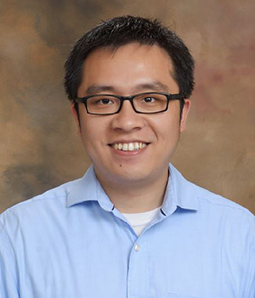
Cheng Gong
“For pioneering the experimental discovery and understanding of novel two-dimensional materials and the highly innovative development of spintronic devices based on such materials”.
Short Biography
Cheng Gong has been an assistant professor in the Department of Electrical & Computer Engineering and Quantum Technology Center (QTC) at the University of Maryland, College Park since 2019. His group focuses on magnetic, electronic and optical properties of two-dimensional (2D) materials, nanostructures and nanodevices, studied by a variety of optical and electrical approaches in synergy with density functional theory calculations. From 2014 to 2019, he was a postdoctoral fellow at University of California, Berkeley, where he pioneered the discovery of the first magnetic 2D material and innovated the development of spintronic devices based on magnetic 2D materials and heterostructures. He received his Ph.D. in 2013 in Materials Science and Engineering at the University of Texas at Dallas, where he conducted a series of experimental and theoretical work on the topics of metal-graphene contact, metal-TMD (transition metal dichalcogenides) contact, graphene synthesis and optimization, and graphene oxide reduction and intercalation.
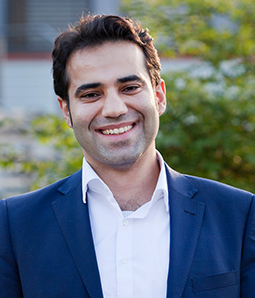
Michael Saliba
“For his pioneering discoveries in the fundamental physical and chemical understanding of phase-stable, long-term durable perovskite semiconductors for sustainable solar cells and light-emitting devices.“
Short Biography
Michael Saliba (@miliba01) is a full professor and the director of the Institute for Photovoltaics (ipv) at Stuttgart University (@SalibaLab) with a dual appointment as Helmholtz Young Investigator at the Research Center Julich, Germany.
Previously, he was a professor at TU Darmstadt, a Group Leader at the University of Fribourg, and a Marie Curie Fellow at EPFL (with a research visit at Stanford), Switzerland. He completed his PhD at Oxford University in 2014 (with a research visit at Cornell) working on crystallization behaviour and plasmonic nanostructures in perovskites. He obtained his MSc in physics at the Max Planck Institute for Solid State Research on simulation methods for plasmonic oligomers.
In 2016, Saliba was awarded the Young Scientist Award of the German University Association. In 2017, he was awarded the Science Award of the Fraunhofer UMSICHT institute, the René Wasserman Award of EPFL, and the Postdoctoral Award of the Materials Research Societ (MRS). He was also named as one of the World’s 35 Innovators Under 35 by the MIT Technology Review for his pioneering discoveries in the field of perovskite solar cells and optoelectronics. In 2020, he was awarded the Heinz Maier Leibnitz Prize by the German Research Foundation (DFG). In the same year, he was elected as a Board Member of the National Young Academy of Germany, a Young Scientist at the World Economic Forum as well as the Co-Chair of the Global Young Academy.
Michael Saliba has published over 100 works in the topics of plasmonics, lasers, LEDs, and perovskite optoelectronics. Times Higher Education considers him the 3rd most influential scientist in perovskite research based on the number of publications and quality. Since 2018, he is listed as an ISI Highly Cited Researcher.
Saliba was part of many of the early discoveries in the perovskite field. His research focuses on a deeper understanding of novel semiconductor materials such as perovskites which can be used in applications such as solar cells, light-emitting devices, and sensors. He developed and investigated the fundamental properties of a new family of perovskites by adding more stable inorganic metal ions. The new generation of perovskite materials has a substantially suppressed amount of detrimental impurities resulting in a higher temperature, humidity and phase stability with performances close to the theoretical limit. Importantly, solar cell operation at elevated temperature, which is an industrial prerequisite, was successfully demonstrated, which is a key breakthrough for commercialization. The new material design principle has established a new standard for perovskites which is followed by research and industry groups worldwide.
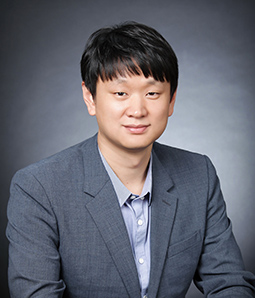
Heejun Yang
“For his outstanding contribution to novel interface devices based on structural, electronic, and quantum-state control with van der Waals layered materials.”
Short Biography
Heejun Yang received his PhD in physics with a subject on graphene by scanning tunneling microscopy and spectroscopy (STM/STS) from Seoul National University (Korea) and University Paris-Sud XI (France, a joint degree) in 2010, and experienced industrial device studies in Samsung Electronics from 2010 to 2012. Then, he conducted his research on graphene spintronics in CNRS/Thales as a postdoc from 2012 to 2014. With his research background on molecular and nanometer-scale studies (in Seoul and Paris) and electric and spintronic device physics (in Samsung and CNRS/Thales), he moved to Sungkyunkwan University as an assistant professor on March 2014 and started original device studies with phase engineering of low-dimensional materials. He has proposed novel and conceptual interface devices such as ‘Graphene Barristor’ and ‘Ohmic homojunction contact between semiconductor channel and metal electrodes’.
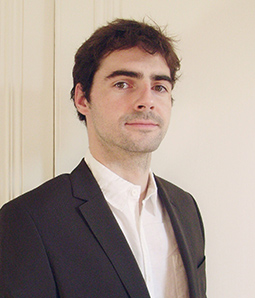
Jean Christophe Blancon
“For his outstanding contributions to elucidating mechanisms of formation and dissociation of exciton states in solution processed perovskite quantum well semiconductors for efficient optoelectronics.”
Short Biography
Jean Christophe Blancon is a senior research Scientist in the George R. Brown School of Engineering at Rice University (Houston, TX, USA). He graduated from the University of Lyon (France), and completed in 2010 his M.Sc. in physics from the Ecole Normale Superieure de Lyon, and his M.Sc. in optics and photonics from the Karlsruhe Institute of Technology (Germany). He was a postdoctoral fellow who joined Los Alamos National Laboratory (USA) in 2014 after obtaining his Ph.D. in physics from the University of Lyon in 2013, where he worked on measuring the absolute absorption cross-section of individual single- and double-wall carbon nanotubes. During his four-year postdoctoral appointment at Los Alamos, Jean-Christophe’s main contribution was to elucidate mechanisms of formation and dissociation of exciton states in solution-processed, organic-inorganic, perovskite quantum well semiconductors, which has led to the core design of perovskite-based optoelectronic devices. His work has opened a new direction for tuning the materials chemistry of hybrid perovskite based low dimensional materials and for achieving desired and new emergent functionalities. This work has led to more than 20 publications among which in Nature, Science, Nature communications, and Advanced materials, cited more than 2000 times.
Jean-Christophe’s work focused on understanding multi-scale phenomena in low dimensional hybrid materials and directly correlate nanoscale physical mechanisms, including charge-energy conversion and transfer, to understand macroscopic figures-of-merit and performances of optoelectronics devices such as solar cells, light emitters, detectors, and transistors. His recent focus has been on investigating the interplay between the mechanical, optical, and electronic properties of hybrid perovskites.

Kimberly Dick Thelander
Department of Materials Science, Lund University
“For her work to control and understand growth of nanowires, including three-dimensional structures, superlattices, crystal phase engineering and bandgap design”.
Short Biography
Kimberly Thelander is a Professor of Materials Science at Lund University, Lund, Sweden, appointed jointly at the division of Solid State Physics and the Center for Analysis and Synthesis. She completed undergraduate studies in Chemical Physics at the University of Waterloo, Canada, followed by a PhD in Physics from Lund University. Her research is focused on the development of novel materials in nanostructures, specifically focused on unusual polytypes and alloy semiconductors in III-V nanowires. Most recently she is involved in the development of in-situ TEM for real-time investigations of nanowire growth.

Samuel (Sam) Stranks
MIT/University of Cambridge
“For pioneering discoveries in the field of perovskite solar cells and optoelectronics through spectroscopy”.
Short Biography
Sam Stranks is a TED Fellow and a Marie Curie Fellow currently based jointly at the Massachusetts Institute of Technology and Cambridge University. He graduated from Adelaide University in 2007 with a BA and BSc (First Class Honours in Physics) and a University Medal. He completed his PhD as a Rhodes Scholar at Oxford University with Robin Nicholas, receiving the 2012 Institute of Physics Roy Thesis Prize for his work on carbon nantoube/polymer blends for organic solar cell applications. From 2012-2014, he worked as a post-doctoral researcher in Henry Snaith’s group at Oxford University where he was also a Junior Research Fellow at Worcester College and Lecturer in Physics at Corpus Christi College. He will establish his research group at Cambridge University as a Royal Society University Research Fellow in October 2016.
Sam’s work focuses on understanding and manipulating the optoelectronic properties of metal halide perovskites, which are generating a great deal of attention for their use in high performance solar cells and light-emission applications. He was involved in many of the early breakthroughs in this burgeoning field, including the first reports of long carrier diffusion lengths, visualization of ion migration in these materials, and description of charge carrier recombination kinetics.




